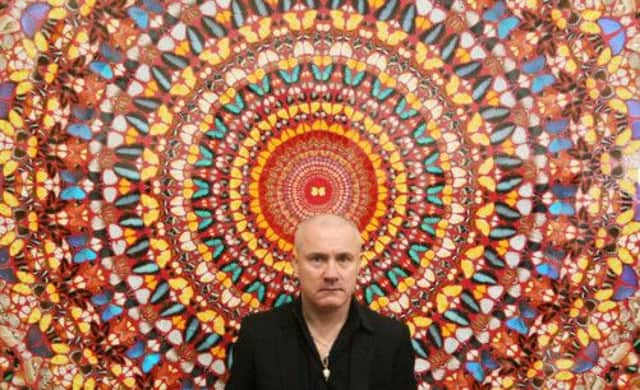Tiffany Jenkins: Show respect for art and walk on by


I have skimmed through many, but cannot recall one line from any, because as my eye flitted across the stanza I was on my way somewhere else, late, distracted, thinking about the day ahead.
Which is why I cannot but groan at the plans for Art Everywhere – the next initiative from our cultural mandarins – where for two weeks in August pictures of selected artworks by British artists will be on display on tens of thousands of billboards up and down the country. It’s a massive poster campaign designed to get us enjoying art. In order to see an image of, say, a John Constable at the bus stop, or a Henry Raeburn in the car park, we, the British public, will have to make a financial donation, which will be matched by the organisers, and the art work will appear.
Advertisement
Hide AdAdvertisement
Hide AdArt Everywhere is the brainchild of Richard Reed, the co-founder of the refreshment company Innocent Drinks, who wants to “flood the streets with art”. It’s supported by the Tate Gallery and the Art Fund, and the billboard space has been donated. The organisers hope it will inspire people who do not traditionally visit art galleries to like art. Artists, including Damien Hirst and Bob and Roberta Smith (Patrick Brill), are enthusiastic about the plans. Hirst raved: “Art is for everyone, and everyone who has access to it will benefit from it. This project is amazing and it’s democratic and it gives the public a voice and an opportunity to vote for what they want to see on their streets”. Smith said: “This projects sticks art out on the street and says: ‘This is yours’.” He hopes that it will encourage young people to go to art school.
I know what some of you are thinking – what can I possibly have against posters of artwork on the streets? What am I complaining about now? There is a sweet, wide-eyed innocence to the plan, and it’s well-meaning, but that doesn’t mean it’s a good idea. Just letting these schemes proliferate, and there are many of them launched in the name of democratising the arts, without due reflection, is to endorse the trivialisation of art. At best, with Art Everywhere, a great deal of time, energy and a moderate about of money is wasted. At worst, it communicates unfortunate assumptions and ideas about art and, as it happens, the public, which could well have the opposite effect of what is intended.
Firstly, it should be pointed out that despite the talk of democratisation, the public don’t actually get to choose the pictures that will be on offer. A shortlist of 100 will be selected by a committee of “art directors” and “creators”. The public will then only be permitted to vote for the final 50. So this is a top-down scheme conducted in the name of the public that gives people the appearance of having a voice when they have no real say. So far, so X-factor.
Here, the public are treated as simple, passive consumers. There are, inevitably, accompanying goods that we can purchase. T-shirts with the text: “I like art at the end of my road” and “I like amazing art everywhere” on the front. When the posters are up, with our mobile phones, we will be able to find out where the original is and, if we stump up £450, buy a print. But aesthetic appreciation requires more that using a credit card, as does art school.
This is a scheme that prioritises the accessibility of art over quality. The most obvious problem is that they will be prints of real pictures, pictures that are better seen in the flesh, so to speak. A blown-up poster doesn’t come close to standing in front of the real thing. The colour, texture, and feel of a painting are limited and reduced when it’s reproduced in this way. The brush strokes and subtleties vanish.
Crucially, “flooding” the streets with art so that it is “everywhere” suggests that art is an everyday experience, rather than something extraordinary. But the point about art is not that it should be on every corner or at a bus stop, but that it should be somewhere that is special and unique. This is what a gallery can achieve; beyond presenting art work in relation to other art work. A devoted space, away from the noise of the street, declares: this is important, this is worthy of your attention. Art is something that warrants taking time out of our daily schedule to see. It deserves concentration, not to be spied out of the corner of our eye, rushed past as part of an already busy morning, momentarily glimpsed whilst waiting for a train, thinking about the next meeting. As with the poems on the underground, it’s not the end of the world that poetry or art is placed in such ordinary spaces, for us to glimpse, but it won’t encourage a love of the arts in any real sense.
This strikes me as a project that is too scared to suggest we spend a day at an exhibition, it asks too little. It transforms art into something that is marketed at us, with the semblance of involving us, a little bit; but not too much, all of which is likely to elicit little more than a smile of goodwill, rather than help foster a culture that cherishes art. Initiatives like these convey the impression that art is not much of a bother, which is no way to value art anywhere. Let us be serious. If we want people to like art, to engage with it and treasure it, we have to respect it as something that requires more than walking on by.